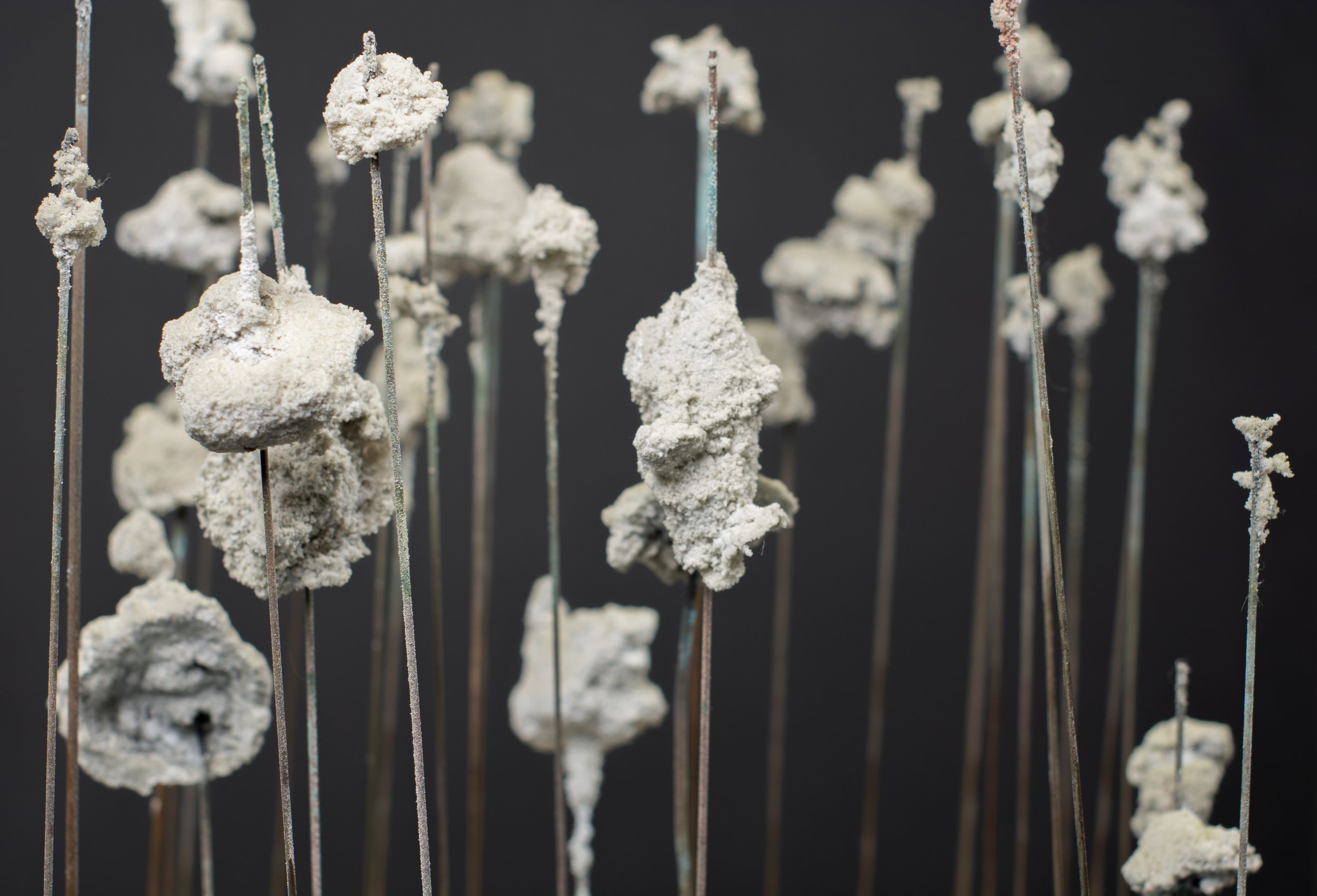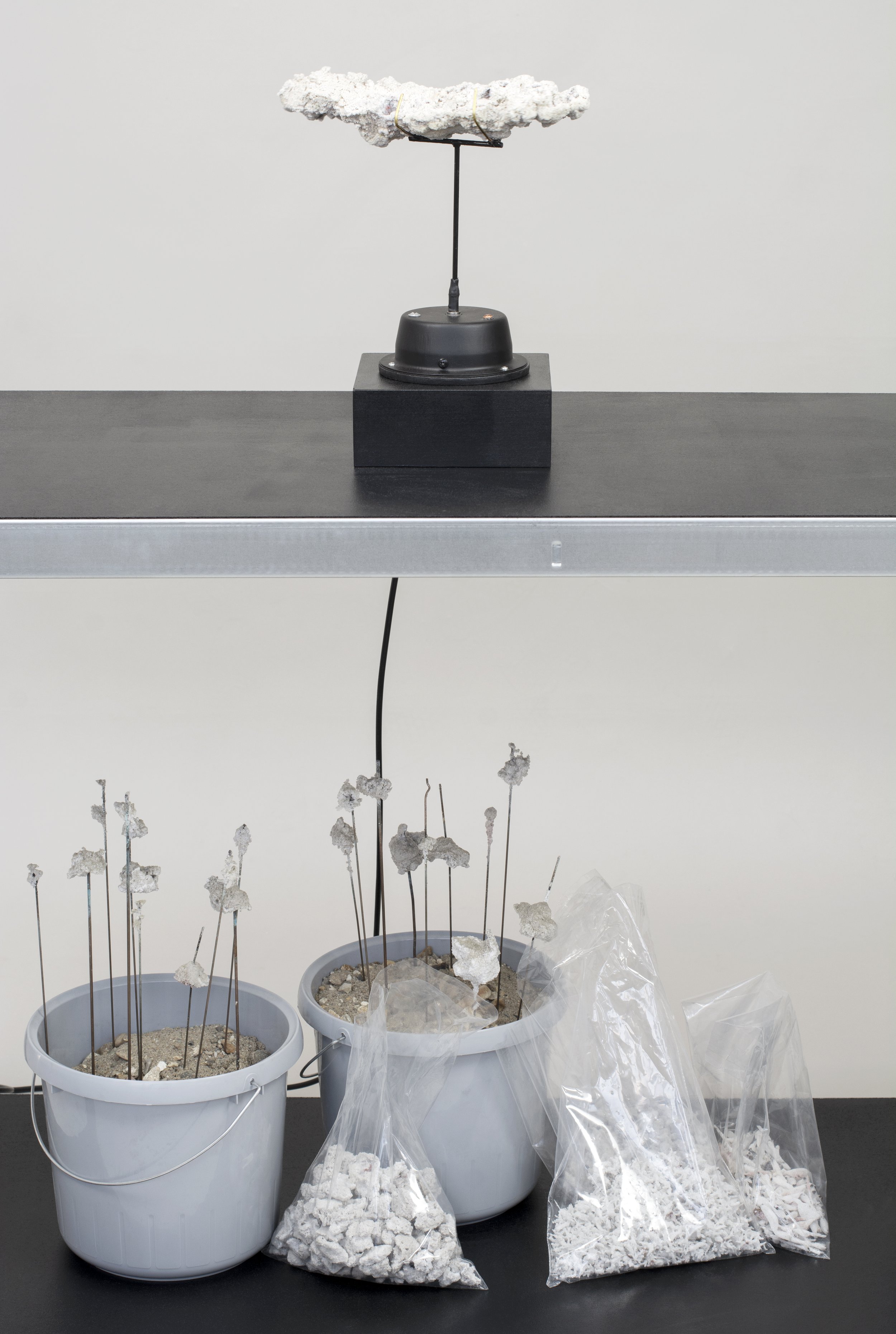Fulguric Events, 2016 - present day.
A few years ago, I had the opportunity to launch my investigation into spontaneous manifestations caused by lightning when I was granted permission to work in a lightning simulation lab in Abingdon, near Oxford (UK). The lab is designed to study the effects of direct and indirect lightning strikes on complex technical structures such as airplanes, military installations or wind-turbines. Equipped with high-voltage impulse generators that are capable of producing up to 2.4 million volts, and high-current generators specially outfitted to produce over 200,000 amperes of current, the test facility can accurately replicate the effect of a lightning strike as it occurs in nature.
I was allowed to use the high-voltage generators and experimental setup to produce artificial fulgurites or ‘petrified lighting’, three-dimensional vitreous structures that are formed when lightning strikes in sand and alters its composition to a crystalline mass. I managed to produce several artificial fulgurites in the Abingdon lab. One of those fulgurites was subsequently scanned in 3D, enlarged, made into a mould and cast in bronze. I then installed this ‘Fulgurite Zero’ as a lightning rod, so, in turn, it served as an intermediary to create a new fulgurite, which is undergoing the same process of scanning-enlarging-casting as I write.
This closed circuit of image-making by lightning will be repeated until - in the long run - a network of connected fulgurites is formed, thus embracing the concept of an artwork as an ongoing, self-generating process, in which I consider myself the enabler or facilitator rather than the author. I extended my research into fulgurites to my studio by building a small-scale version of a high-voltage circuit made of different parts of household appliances. I was able to gather a whole collection of fulgurites, ranging from small, solid forms to large tubular or branched ones.











